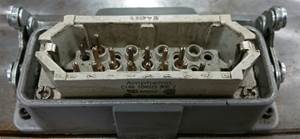NPE2018 New Technology Focus: Foam Fascination
A new physical foaming process and a significant enhancement of the MuCell process attract attention at the show.
Foam molding is seeing increased attention in the marketplace and is on display at several injection and blow molding booths in Orlando. New developments include the U.S. debut of the Plastinum foam injection molding process from Linde LLC (S24207), a leading supplier of industrial gases. This process involves impregnating plastic pellets with carbon dioxide gas in a pressurized chamber, or autoclave. Gas-loaded pellets can then be conveyed to the hopper(s) of one or more molding machines. The hopper is not sealed or under pressure, since gas will remain in the pellets at ambient conditions for 4-6 hr. No modifications to the injection press are required, except for use of a shutoff nozzle.
More new technology for physical foam molding is being introduced at NPE by Trexel (W551), whose new dosing equipment reportedly allows thin-wall molders to lightweight products to a level never before possible. The new MuCell P-Series delivers nitrogen under pressure as a supercritical fluid, and is able to do so at ultra-fast cycle times not previously possible with Trexel’s T-Series dosing equipment. Now, thin-wall packaging molders will be able to achieve 6% lightweighting, 7% faster cycles, 30% lower clamp tonnage, and 12% lower injection pressure, according to Trexel. Trexel is using the P-Series to mold what it calls a “groundbreaking” 6-oz (200-ml) yogurt cup with IML. Using StackTeck TRIM technology, it has ultra-thin-wall panels of only 0.008 in. (0.2 mm).
Trexel also is promoting what it calls “the first-ever design service dedicated to foamed components.” 2Limit is a joint venture of Trexel and GK Concept of Dresden, Germany, a specialist in product development, FEM calculations, filling simulation, prototyping, tool design, and mold trials. This venture is intended to fill a gap in the marketplace, making it easier to find design engineers skilled in the art of foamed part design—who know how to “break the rules” of conventional design for injection molding.
MuCell microcellular foaming can be seen at several more booths besides Trexel’s: Engel (W3303) uses MuCell together with its new DecoJect in-mold decorating process to provide uniform low-pressure packing and avoid sink marks and read-through of mold features.
Milacron (W2703) is using MuCell to produce an SUV door panel with map pocket using Milacron’s “Core Back/Reverse Coining” technique, whereby the mold is closed and then opened to a predefined position to allow foam expansion. Milacron achieves a Class-A surface on its MuCell foamed part using Roctool “Heat & Cool” technology with rapid induction heating. Yizumi-HPM (W3343) also uses MuCell together with rapid-heat/cool mold technology (based on a special TCU from Single Temperature Controls), a combination it calls Yizumi FoamPro.
Foam blow molding is also claiming attention at this NPE. W. Müller USA (W1983) is celebrating the first commercial application (20 L agricultural chemical containers) for its trilayer foam-core process, which involves injecting gas into the extrusion head. And Wilmington Machinery (W1823) is talking about foam blow molding on wheel, reciprocating-screw or accumulator-head machines. Applications could include bottles to large (40-gal) industrial containers and automotive parts such as tanks for fluids other than fuel.
Related Content
Three Key Decisions for an Optimal Ejection System
When determining the best ejection option for a tool, molders must consider the ejector’s surface area, location and style.
Read MoreGot Streaks or Black Specs? Here’s How to Find and Fix Them
Determining the source of streaking or contamination in your molded parts is a critical step in perfecting your purging procedures ultimately saving you time and money.
Read MoreA Systematic Approach to Process Development
The path to a no-baby-sitting injection molding process is paved with data and can be found by following certain steps.
Read MoreHot Runners: How to Maintain Heaters, Thermocouples, and Controls
I conclude this three-part examination of real-world problems and solutions involving hot runners by focusing on heaters, thermocouples, and controls. Part 3 of 3.
Read MoreRead Next
For PLASTICS' CEO Seaholm, NPE to Shine Light on Sustainability Successes
With advocacy, communication and sustainability as three main pillars, Seaholm leads a trade association to NPE that ‘is more active today than we have ever been.’
Read MoreBeyond Prototypes: 8 Ways the Plastics Industry Is Using 3D Printing
Plastics processors are finding applications for 3D printing around the plant and across the supply chain. Here are 8 examples to look for at NPE2024.
Read MorePeople 4.0 – How to Get Buy-In from Your Staff for Industry 4.0 Systems
Implementing a production monitoring system as the foundation of a ‘smart factory’ is about integrating people with new technology as much as it is about integrating machines and computers. Here are tips from a company that has gone through the process.
Read More















